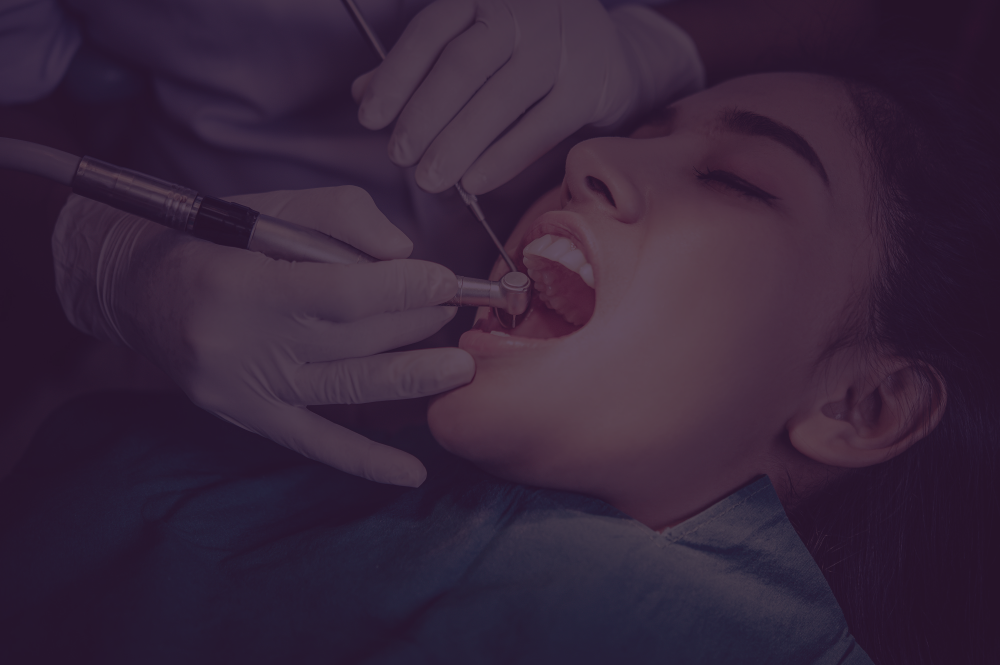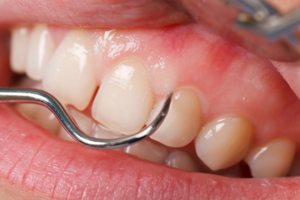
Gum Enlargement Therapy
Treatment of Gum Enlargement Therapy
Gum enlargement, also known as gingival hyperplasia, is a condition characterized by the overgrowth of gum tissue around the teeth. Treatment focuses on reducing the excess tissue, improving gum health, and restoring oral function and aesthetics. At Vijay Dental Miyapur, our experts specialize in Periodontal Care in Miyapur, offering advanced techniques for Gum Disease Treatment to ensure effective and lasting results.
Steps Involved in Gum Enlargement Therapy
- Diagnosis and Evaluation: A thorough examination to identify the underlying causes, such as poor oral hygiene, medication, or systemic conditions.
- Scaling and Root Planing: A deep cleaning procedure to remove plaque and tartar buildup, which may contribute to gum inflammation.
- Gingivectomy: In severe cases, surgical removal of the excess gum tissue may be performed to restore a healthy gum line.
- Laser Therapy: Minimally invasive laser techniques may be used to contour the gums with precision and reduce recovery time.
- Maintenance and Follow-Up: Periodic periodontal care appointments ensure the condition does not recur, maintaining optimal gum health.
Benefits of Gum Enlargement Therapy
- Enhanced Oral Health: Reduces the risk of gum disease by eliminating excess tissue where bacteria can accumulate.
- Improved Aesthetics: Restores a natural and even gum line, enhancing the smile.
- Better Comfort: Alleviates discomfort caused by swollen or overgrown gums.
- Improved Function: Facilitates proper oral hygiene practices, including brushing and flossing.
- Boosted Confidence: Enhances self-esteem by improving the appearance of teeth and gums.
Laser Crown Lengthening Procedures
Laser Crown Lengthening Procedures: A Comprehensive Guide
Laser Crown Lengthening is a minimally invasive dental procedure designed to enhance both the health and aesthetics of your smile. Using advanced laser technology, this technique reshapes the gum tissue and bone around the teeth to expose more of the natural tooth structure. It is often recommended for addressing issues such as a “gummy smile,” tooth decay below the gum line, or to prepare a tooth for restorative treatments like crowns or veneers.
Benefits of Laser Crown Lengthening
- Enhanced Aesthetics: Achieve a balanced, more proportionate smile by reducing excess gum tissue.
- Improved Oral Health: By removing pockets of gum tissue that can harbor bacteria, this procedure reduces the risk of gum disease.
- Precision and Comfort: Laser technology ensures greater accuracy, minimal bleeding, and faster healing compared to traditional methods.
- Facilitates Restorative Work: Exposing more of the tooth’s surface makes it easier to place crowns or bridges securely.
Various Flap Surgeries using Lasers
Various Flap Surgeries Using Lasers: Enhancing Periodontal Care in Miyapur
Flap surgeries using lasers are advanced dental procedures designed to address moderate to severe gum diseases, including periodontitis. This innovative treatment combines traditional flap surgery techniques with the precision and effectiveness of laser technology, providing a minimally invasive solution for gum disease treatment.
During the procedure, the gum tissue is gently lifted to access the underlying tooth roots and bone. Laser technology is then used to remove infected tissue, sterilize the area, and promote healing, resulting in a highly effective and comfortable experience. This approach not only eliminates bacteria and diseased tissue but also stimulates tissue regeneration and reduces the risk of complications.
Benefits of Flap Surgeries Using Lasers for Gum Disease Treatment
- Minimally Invasive: Lasers provide precise control, minimizing damage to healthy tissues.
- Reduced Discomfort: Less bleeding, swelling, and pain compared to traditional methods.
- Faster Recovery: Accelerated healing times due to the laser’s ability to promote tissue regeneration.
- Enhanced Precision: Effectively targets infected areas without impacting surrounding healthy tissue.
- Improved Outcomes: High success rates in restoring gum health and preventing further periodontal damage.
Explore the benefits of laser flap surgeries and experience unparalleled periodontal care at Vijay Dental Miyapur. Take the first step toward healthier gums and a confident smile today!
Frenectomy
What Is a Frenectomy?
The frenum can sometimes restrict normal movement of the tongue or lips, leading to challenges like tongue-tie (ankyloglossia), speech difficulties, or gaps between the front teeth. A frenectomy resolves these concerns by releasing or repositioning the tissue, allowing for better mobility and function.
Benefits of Frenectomy
1. Enhanced Speech Development
For individuals with tongue-tie, a frenectomy can improve tongue mobility, enabling clearer speech and better pronunciation. This is particularly beneficial for children who may struggle with language development due to restricted tongue movement.
2. Improved Oral Hygiene
Restricted tongue or lip movement can make it difficult to clean certain areas of the mouth, leading to plaque buildup and gum issues. A frenectomy allows for easier brushing and flossing, promoting better oral hygiene and reducing the risk of cavities and gum disease.
3. Orthodontic Support
In some cases, a tight frenum can cause gaps between teeth, particularly the upper front teeth. A frenectomy can be part of an orthodontic treatment plan, helping to close gaps and maintain the alignment achieved with braces or aligners.
4. Better Feeding Habits
For infants with tongue-tie, a frenectomy can make breastfeeding or bottle-feeding more effective and comfortable. It allows the baby to latch properly, reducing feeding difficulties for both the baby and the parent.
5. Relief from Discomfort
Tension caused by a tight frenum can lead to discomfort or pain in the mouth. A frenectomy alleviates this tension, improving comfort and function during daily activities like speaking, eating, or smiling.
Why Consider a Frenectomy?
A frenectomy is a quick and straightforward procedure with minimal recovery time, making it an excellent solution for various oral concerns. Whether addressing functional, aesthetic, or developmental issues, this treatment can significantly enhance your quality of life.
If you’re experiencing challenges related to restricted tongue or lip movement, consult a dental professional to learn how a frenectomy can help. Take the first step toward improved oral health and comfort today!

